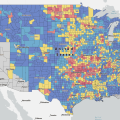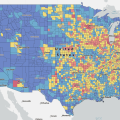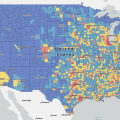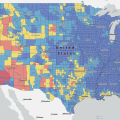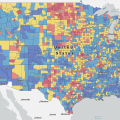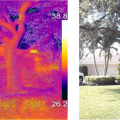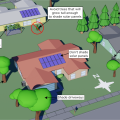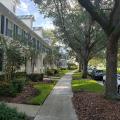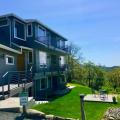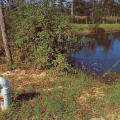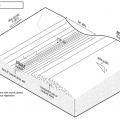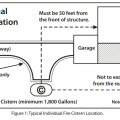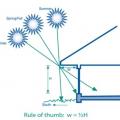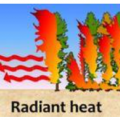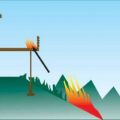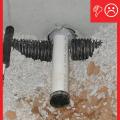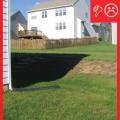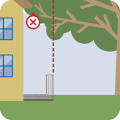Showing results 51 - 77 of 77
The pilings for this building are showing signs of failure due to a poor siting decision to locate the home too close to the surf.
The thermal image on the left and normal picture on the right show the cooling effect of a shade tree on walls and ground surfaces as compared to unshaded areas of the property (darker colors are cooler while lighter colors are hotter in the left image).
The USDA Plant Hardiness Zone Map can be a valuable reference in determining appropriate landscape plants for your climate .
There are many landscaping strategies that can be used to reduce the cooling load and energy consumption of a home and its neighborhood.
These trees were planted between the sidewalk and the street, providing shade to homes, pedestrians, parked cars, and the street.
These wildfire-resistant decks have a solid decking surface, metal railings, and the underside timber supports are covered with flame-resistant fiber cement board; also the decking is set back from the vegetated slope.
This above-ground private fire suppression cistern has a hydrant threaded for easy attachment to local fire department hoses.
This dry hydrant was installed by a homeowner living in a rural location to provide firefighters with easy access to this natural water source located on their property.
This home has defensible space around it, with a vegetation-free zone that helped the house survive a surrounding wildfire.
This home survived the Laguna Beach fire of October 1993, which claimed more than 400 neighboring homes, thanks to a fire-resistant tile roof, stucco exterior, stucco-covered boxed eaves and under-decks, double-pane windows and selective landscaping
This home was incorrectly sited and supported too near a slope consisting of unstable soils.
This swale and berm slow the flow of stormwater across a site to minimize erosion.
Typical siting and emergency vehicle turnaround requirements for a private residential cistern for fire protection.
When preserving a tree, construct a temporary fence around the tree canopy and post signs to keep out vehicles that might compact soil and construction waste that could contaminate the soil.
Windblown embers and firebrands are the most common cause of structural fires in wildfires, followed by fires started by radiant heat igniting surfaces or breaking windows and allowing embers in, followed by direct flame contact
Wrong – Conventional wood deck risks ignition from embers falling on the surface or from unmaintained vegetation burning below.
Wrong – Drain pipe has been cut and foundation penetration has not been properly sealed
Wrong – Tree branches close to the house are prone to spreading crown fires to the house; the tree should be trimmed so that branches are at least 10 feet back from the red dashed line indicating the deck railing of the house.
